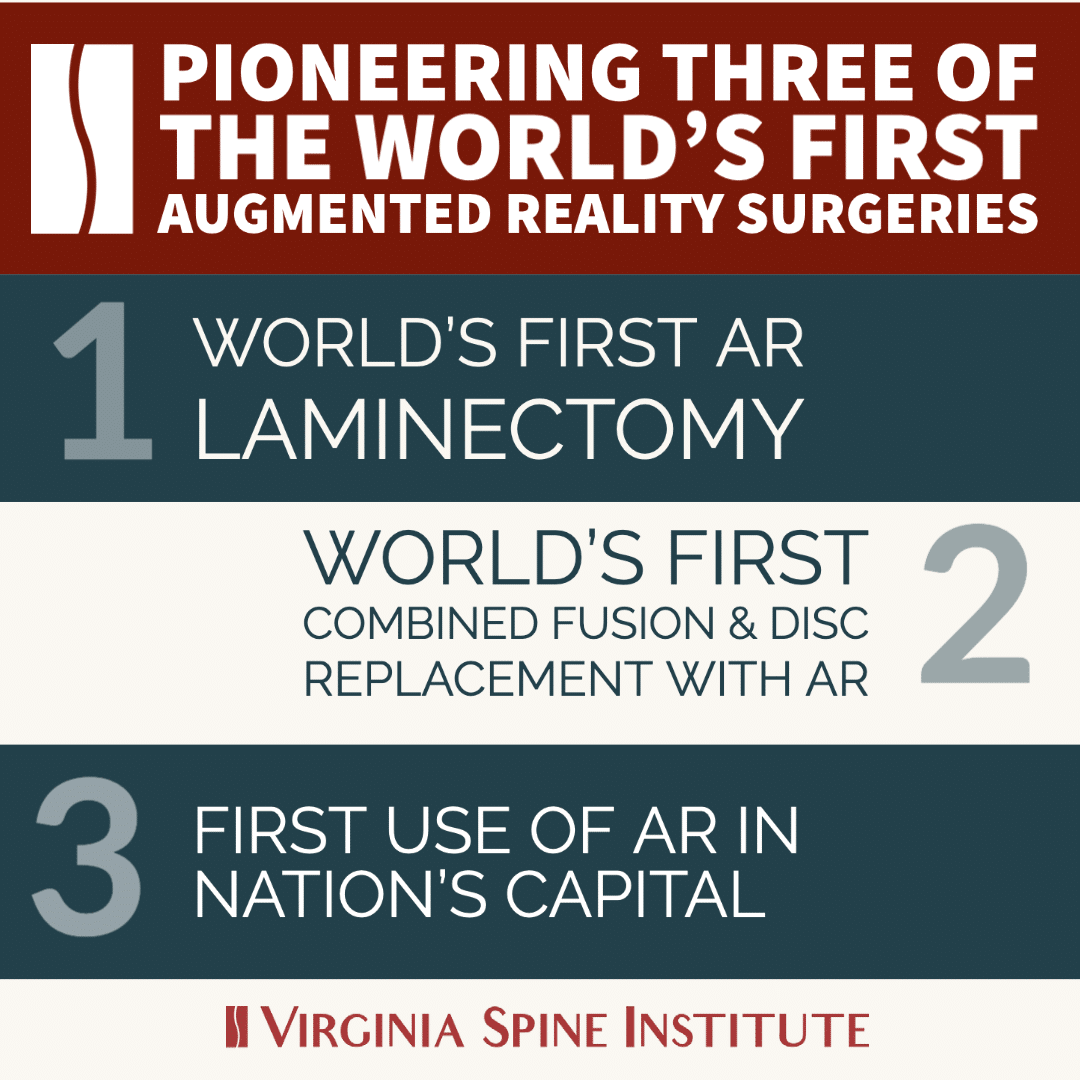
VSI Makes World News With Augmented Reality Surgeries
BREAKING NEWS – VSI’s spine surgeons are among the first in the world to utilize augmented reality for spine surgeries.
Dr. Christopher Good became the first surgeon in the Virginia-DC area, and among the first in the world to use augmented reality in a lumbar fusion surgery on October 9, 2020.
On November 4, 2020, Dr. Jazini performed the world’s first laminectomy utilizing augmented reality technology. This is an incredible sign for the future of minimally invasive spine surgeries and shows the fast-growing need for augmented reality. This surgical procedure, also known as decompression, creates space and enlarges the spinal canal to relieve pressure on the spinal cord or nerves. The use of augmented reality in a laminectomy makes the surgery even less invasive, which means a shorter recovery time and less pain in the healing process. Dr. Jazini later used augmented reality in hybrid spine surgery (combining a lumbar disc replacement and spinal fusion), again becoming the first in the world to do so.
The AR “Xvision” system, made by Augmedics, makes it possible for surgeons to visualize a patient’s 3D spinal anatomy during surgery – almost like they have ‘x-ray vision.’ This groundbreaking new technology is the first application of augmented reality in surgery and has the potential to streamline and partner with several technologies in the operating room, giving surgeons better control and making procedures easier, safer, faster, and less invasive. The surgeries were performed at Reston Hospital Center (HCA Virginia Health System).
Approved by the FDA this past December, AR has been shown to improve accuracy, potentially leading to better patient outcomes. It’s expected to revolutionize the healthcare industry leading to faster, safer surgical procedures.
The technology utilizes all elements of a traditional navigation system, including a special headset the surgeon wears during the procedure. The navigation system projects the patient’s CT images into the surgeon’s headset, making it possible for him to see high-resolution 3D pictures inside the bones of the patient’s spine superimposed over the patient’s actual anatomy in real time. The goggle headset also accurately determines the position of surgical tools and superimposes them on the patient’s vital data, so the doctor never has to take his eyes off the patient.
“This technology allows us to have a patient’s information and scans in front of us in a customizable display so instead of just looking at the surface of the bone, I can literally see the 3D picture inside as well as a computerized target drawn on the bone showing where I need to go,” Dr. Christopher Good explains. “This means I never have to look away from the patient at scans on a screen across the operating room and I can stay focused entirely on the patient while operating on them. It’s as if I had x-ray vision!”
“We’re extremely excited to be involved in developing this groundbreaking technology,” Dr. Good says. “We are excited to be able to offer this technology to other patients too. Bringing AR into the operating room has the promise of leading to smaller incisions and less invasive procedures which means less pain and faster recovery for patients.”
Topics covered
About the Author
Featured Resources
Insights to Achieve a Pain-Free Life



